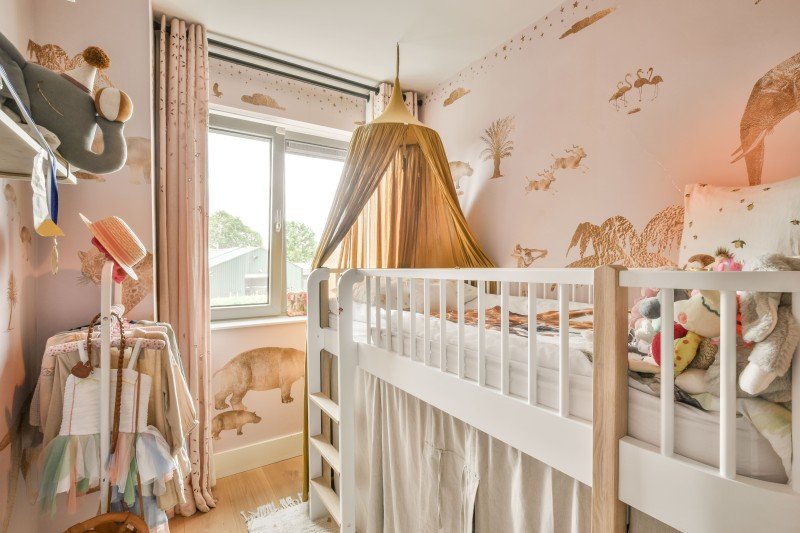
bunk_beds6943
About bunk_beds6943
See What Kids Bunk Beds Tricks The Celebs Are Using
The Ultimate Guide to Kids Bunk Beds: Safety, Styles, and Selection
Kids’ bunk beds are a useful and popular service for optimizing space in children’s rooms. Not just do they supply sleeping arrangements for brother or sisters or pajama party guests, but they can also serve as an enjoyable and creative living space for young travelers. This short article checks out the types, advantages, safety factors to consider, and choice ideas for kids’ bunk beds while answering some regularly asked concerns.
What Are Kids Bunk Beds?
Kids’ bunk beds can be found in different designs, styles, and materials. Generally, they include 2 or more beds stacked vertically, which can save space and enable for more space for play. With various setups, consisting of L-shaped, lofted beds with desks below, and convertible designs that can separate into single beds, parents have adequate choices to choose from.
| Bunk Bed Type | Description |
|---|---|
| Conventional Bunk Beds | Two beds stacked one on top of the other. |
| Loft Beds | One raised bed with space below for play or a desk. |
| Triple Bunk Beds | 3 beds stacked vertically or arranged in an L-shape. |
| Futon Bunk Beds | A bed on the top with a fold-out sofa or futon below. |
| L-shaped Bunk Beds | Beds set up in an L-shape, providing extra space. |
Benefits of Kids Bunk Beds
Investing in a bunk bed for children features various benefits:
Space Saving
- Effective Use of Space: Bunk beds stack vertically, lowering the footprint in a space.
- Additional Play Area: The space below can be utilized for extra activities or storage.
Cost-Effective
- Double Functionality: A bunk bed can satisfy of 2 different beds without needing double the flooring space.
- Long-term Use: Many designs are convertible or can shift into separate beds as kids grow.
Enjoyable and Imagination
- Adventurous Appeal: Kids are typically drawn to the principle of going up to their beds, including a fun component to bedtime.
- Themed Options: Many bunk beds can be found in different styles, like castles or pirate ships, promoting creative play.
Safety Considerations
While bunk beds supply different advantages, security is a primary concern for parents. Here are some safety ideas to remember:
- Guardrails: Ensure the top bunk has strong guardrails on both sides to avoid falls.
- Height Limitations: Check if the bed’s height is suitable for your kid’s age. Usually, they are not recommended for kids under 6.
- Weight Limits: Respect the producer’s guidelines for weight limits to prevent structural problems.
- Sturdy Ladders: Inspect the ladder for stability and ensure it is available for children to utilize securely.
- Routine Checks: Periodically look for loose screws or structural stability issues.
Selecting the Right Bunk Bed
When selecting a bunk bed for children, think about these key factors:

Material
- Wood: Offers traditional resilience and visual appeal.
- Metal: Lightweight and often offered in modern designs.
- Composite: Cost-effective, these materials can be durable but might have limitations on longevity.
Style
- Style: From traditional to modern, select a style that fits your kid’s room decor.
- Functionality: Consider whether extra features like storage, desks, or futons are required.
Size
- Room Dimensions: Ensure the bunk bed fits comfortably in the room, leaving space for other furnishings.
- Mattress Size: Standard sizes (twin, complete) determine the choice of mattress and bedding.
Assembly
- Alleviate of Setup: Some models require more complicated assembly; consider future relocations.
- Direction Quality: Look for beds with clear guidelines for hassle-free setup.
Budget
- Affordability: Review your budget plan, keeping in mind that better products and additional features may raise expenses.
Frequently Asked Questions About Kids Bunk Beds
Q: At what age can my kid safely sleep in a top bunk?
A: It is usually suggested that kids be at least 6 years old before oversleeping the leading bunk due to height and security concerns.
Q: Can I transform a bunk bed into different beds?
A: Many bunk beds are developed to be convertible, permitting you to separate them into specific beds as Kids Bunk Bed grow.
Q: How do I ensure my child’s safety on a bunk bed?
A: Always utilize guardrails, regularly check structural stability, and ensure that the bed is properly sized for their age.
Q: What devices do I need for a bunk bed?
A: Consider guardrails, a strong mattress, decorative bed linen, and storage options for toys or clothing.
Q: Do bunk beds require unique bed mattress?
A: It’s suggested to utilize a bed mattress that fits comfortably within the bed frame– prevent oversized mattresses that might jeopardize safety.
Kids’ bunk beds serve as a practical and pleasurable sleeping solution that can improve any kid’s bedroom. By understanding the benefits, security factors to consider, and selection suggestions, parents can make educated choices that deal with their kids’s requirements. With the best option, a bunk bed can end up being a valued part of childhood– imparting enjoyable, adventure, and memories for several years to come.

